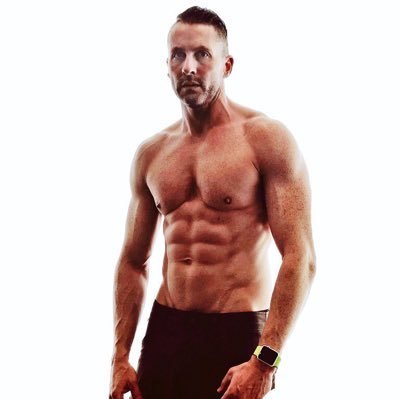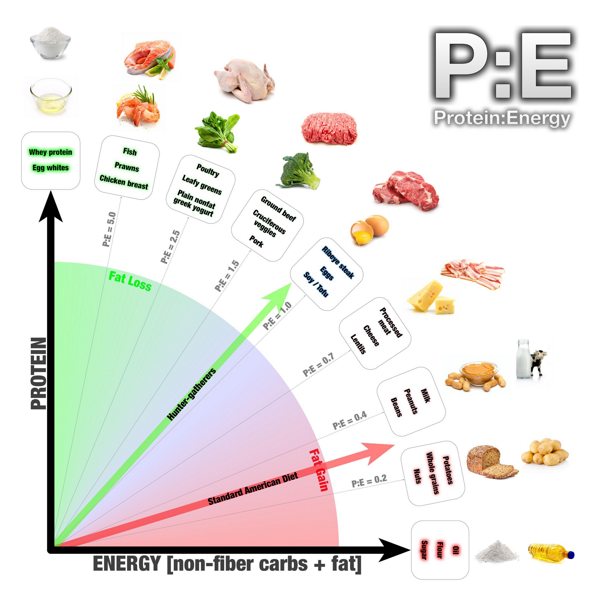Eat for Health
 Diet is confusing. Experts disagree. There’s a lot of money to be made. People are getting fatter every day, diabetes is rising and Alzheimer’s (aka type 3 diabetes) is at an epidemic level. Go back a few generations and people were healthier. What changed?
Diet is confusing. Experts disagree. There’s a lot of money to be made. People are getting fatter every day, diabetes is rising and Alzheimer’s (aka type 3 diabetes) is at an epidemic level. Go back a few generations and people were healthier. What changed?
Flour production industrialized. Seed oils were developed. Kellogg changed breakfast forever - for religious reasons. Then Ike had a heart attack. The resulting hoohaa gave us The Food Pyramid. Americans were told to reduce saturated fat - thought to be the cause of heart attacks (cholesterol). This fake news changed the food industry. Fat made food enjoyable, the food industry replaced it with sugar and unsaturated/trans fat. They branded these foods as heart healthy.
Today the Standard American Diet (SAD!) contains hyper palatable foods with the perfect mixture of salt, sugar and fat. They are chemically engineered for addiction. For the food industry to grow, American waist sizes had to expand!
You can split food up into three main categories: carbohydrates and fats for energy and protein for essential amino acids. There are essential fats but there are no essential carbohydrates.
Lets quickly go through a few of the ways people are now correcting their diet, becoming healthier quickly and saying goodbye to brain fog. If something seems appealing, do some research to fill in the many blanks in this and jump in.
The Carnivore Diet
What happens if you just eat meat and maybe other animal products? Most people would have assumed, until recently, that you get scurvy and die. A few things changed the dial on this. One was an appearance on Joe Rogan of Shawn Baker. Shawn is responsible for popularizing branding “Carnivore” and has written a book on the subject.
Michaela and Jordan Peterson also started talking about their experiences with the carnivore diet and how it helped with auto-immune issues. There’s anecdotal evidence that it’s helped with irritable bowel to bipolar disorder.
It’s the ultimate elimination diet. Very few people are allergic to meat. If you cut out everything that isn’t meat, you’ll cut out things that are affecting you badly. Vegetables contain vitamins and minerals but also anti-nutrients (like oxylates and lectins).
The ease of the diet for busy people is a plus. You can throw some meat in the slow cooker before work, come back eat it or grill a couple of steaks. Some people eat only every other day on this diet but it’s fairly normal to only need to eat once or twice a day. Once you are adapted to the diet these eating patterns are easier than you imagine. If you’re at McDonald’s/BK, just ask for a few burger patties without the bun, sauce, fries or jumbo drink.

Research on the carnivore diet is sparse. We evolved to eat a primarily carnivore diet and there’s good evidence that hunter gatherers had bigger brains and healthier bodies and bones. There were humans at least 300,000 years ago and close cousins going back millions of years. Agriculture started around 14,000 years ago. We haven’t evolved much since the introduction of agriculture. We have hunter gatherer guts.
The Paleo Diet
The root idea of the paleo diet is to eat as our ancestors did in Paleolithic times. In reality it’s more of an echo of that diet or what stone age people would have eaten in they had Walmart. Lots of meat and/or seafood, nuts (not peanuts), berries etc. More natural forms of dairy are normally considered part of Paleo. Processed foods are avoided. Modern fruit is not eaten as it has been engineered to be mostly sugar. Anything that would have been considered food before farming is OK. Beyond that people on paleo tend to swap potatoes, rice and pasta for sweet potatoes (which are closer to the tubers of old) and still eat some vegetables like zucchini.
Liver is a good addition to muscle meat. Liver is out of fashion but has been a part of traditional diets going back and during hunter gatherer time may have been consumed raw soon after a kill.
Paleo is protein and fat heavy and low carb.
The P:E Diet
The P:E diet is another simple way of looking at food. If you have carbohydrates and fat as energy sources and protein to supply amino acids, you can alter your diet and your body simply by dialing up or down the ratio of protein to energy. If you are carrying excess weight, dial up the protein and down the energy sources.

The paleo and carnivore diets are high protein and low energy. After agriculture started diet drifted towards less protein and more energy. Now, the Standard American Diet is mostly energy and a little protein. Nutritionally dense food sources like meat and fish satiate. There’s a difference between using fat and carbs as the energy source. Fat is stored in adiposites and carbs are broken into glycogen and then, if not used, later stored in adiposites.
The glycogen storage system in the body is very limited. Carbs can be useful in small doses if the energy is going to be used quickly but a high carb diet tends to lead to higher excursions in blood sugar levels and a feeling of an energy crash as the body converts the glycogen to fat. Becoming “fat adapted” i.e. getting the body used to fat as it’s energy source prevents the energy rush followed by a crash produced by high carb diets. If your body is making it’s own sugar, as needed, it’s only going to make what it needs.
The Keto Diet
The Keto(genic) diet was made to fight epilepsy: it prevents or lessens seizures. Since then it’s found a wider audience for weight loss and health. You’ll find lots of good and even more bad information online.
For the Keto diet you think in terms of “macros”, i.e. the ratio of carbs, fat and protein to take in during a meal or a day. Generally speaking, you eat 5% - under 50g per day - of carbs, the majority of your energy is derived from 75% fat and protein is 20%.
The point of low carbs is that your body can’t burn the carbs and store fat, so it spends most of it’s time in ketosis where it’s burning fat by converting it to ketones for fuel.
You can do a loose Keto diet without paying much attention to your macros, simply by cutting down on carbs - maybe only eating green veg - and adding fat. Some do a higher protein form of Keto that is closer to paleo with a few added vegetables. Some people use MCT oil or bullet proof coffees to increase their fat intake but this is a bad path long term.
It’s quite possible to eat a Keto diet and gain weight. There are many Keto recipes for lovely deserts that tickle your taste buds in exactly the same way that Standard American Diet deserts do. If you eat too much fat, the body will store it. Nonetheless, it’s a path to more extreme diets and might help with sugar addiction.
The Vegan Diet
There’s a movie to promote the vegan diet called “The Game Changers”. It’s produced by James Cameron who coincidentally owns a vegan pea protein company. It argues that the vegan diet is superior to other diets for things like athleticism. Previous vegan films (like Cowspiracy) have tended towards the moral arguments, so this is new. The film has been debunked multiple times on youtube.
The idea is to eat entirely plant based food sources. Normally this is a step up from the Standard American Diet, so people can pretty quickly see health benefits. It’s definitely a diet that you need to use supplements to do in a healthy way (vitamin B12, for example).
Experienced vegans will often source fermented foods, which is a way of reducing or eliminating the anti-nutrients in plants - a method our ancestors used. Some attempt a raw food diet - some anti-nutrients are created by the cooking process. It’s very hard to do a vegan diet without it making you either health conscious or ill. Watch for things like hair loss, receding gums or bad nails as obvious signs that you are doing it wrong. A common source of protein is soy, this has an estrogen like effect in the body and can lead to Gynecomastia (man boobs) in men.
There is a lot of scientific evidence for vegan diets, mostly from Harvard, but it’s low quality epidemiology that finds correlations but not underlying causes. There’s some evidence that the diet isn’t sustainable. There are also high correlations of veganism with anxiety and mood disorders but again nothing on mechanisms for this.
The main problem with the standard American diet is that it has the perfect mix of carbs and fat to make you prone to overeating before you hit satiety. Vegan diets are normally very low fat and it’s quite easy to lose weight this way. The main source of energy is carbohydrates. Normally, vegans need to eat many times a day. Blood glucose can only get so high before the body starts storing it as fat.
The arguments for veganism are mainly moral. One argument is that we need to be vegan to sustain the planet. Another is that it’s immoral to kill animals for food. The counter is that many more animals are killed in vegetable food productions than animal food production; they just tend to be small mammals and insects dying slowly from poisoning, rather than larger mammals dying from a bolt to the head. It’s not clean cut though, the majority of farmed animals will be fed on farmed vegetation at some point in their lives.
High Carb / Low Carb
There are high carb and low carb ways to improve your diet. Low carb is easiest once your body adapts. People say it’s about calories in and out and it’s true: it’s been researched that you can lose weight on an all twinkie diet. It’s hard to keep muscle mass - a key indicator of longevity - and lose weight, so in either case it’s important keep protein levels up.
Intermittent Fasting
Intermittent fasting is a strategy, rather than a diet but it helps control calorie intake and can help to line up food with the circadian rhythm so that it’s digested more efficiently.
The idea is to eat only during an 8 hour or less window of time. So if you have your first meal at 7 am, your last meal would be finished at 3pm. That’s quite hard if you’re working, so a lot of people skip breakfast and go from 1pm to 9pm.
The body appreciates not having to deal with food all the time. It encourages autophagy and this is important for health.
If you think about it we all intermittently fast when we sleep, so it’s not much effort to slowly shorten the window in which we eat until we hit 8 or less hours. This is a lot easier if you are fat adapted.
Longer fasts are good for the body but a lot of people find them hard. If you can fast for a day or two twice a year, the body can get on with maintenance uninterrupted by food.
Fast track
Try eating just fatty steak or ground beef every day for a month and see how you feel at the end (expect a rough transition, you’re addicted). Eat as much as you want. You could add eggs - some people react badly to eggs - or other meats - like lamb - and unsweetened greek yogurt or even berries and a few veg, if you want an easier path. If you need to keep your coffee, just add thick cream (lots of fat and a few carbs). After a month, if you suffer from constant pain, it should be easier or gone. Low carb diets lessen inflammation but dairy can cause inflammation for some people.
If meat isn’t your thing, try the vegan diet but research a lot. Most of the problems of the vegan diet can be avoided by going pescatarian (adding fish) if you are OK with that, if not google for vegan supplement stacks. Watch your fat intake, it should be low, otherwise you’re into the same area as the Standard American Diet.
Bonus
If your job isn’t highly physical, add weight training to reduce inflammation further. Some people say you need carbs for weight training. You don’t. You need lots of protein - the body will make the glucose it needs via gluconeogenisis and refill muscle glycogen stores as needed. Weight training is good at any age.
If you don’t have access to weights, your body is a weight. See the books below.
If you’re an endurance athlete the calculations are different, you may still need to refuel during races with carbs. The speed of fat burning increases if you are fat adapted but it’s unlikely keep up with your energy output over the long haul. You can be carb free for shorter training stages and your carb intake during races should reduce.
Note that none of these diets except for Vegan mention supplements. You don’t need supplements if you are eating well. A lot of the RDAs for supplements are pulled out of the air.
Resources
Check out the Peak Human podcast on your favorite podcast app. If you’re an athlete and don’t care about sound quality also check out the Human Performance Outliers podcast. Both have guests each time delving into diet, health and beyond. HPO seems to have some sponsored podcasts, so be aware of that. Consider the Ben Greenfield podcast as well - if you are an unusual human who can separate content from ads and sponsored content or have an unlimited budget.
Search youtube for Joe Rogan Shawn Baker, Paul Saladino, Loren Cordain, Ivor Cummins, Mikhaila Peterson, Weston A. Price & Kristie Sullivan.
Read Nutrition and Physical Degeneration - Weston A. Price, Salt, Sugar, Fat - Michael Moss, The Big Fat Surprise - Nina Teicholz, Good Calories, Bad Calories - Gary Taubes - (the insulin model has been debunked), The Carnivore Diet - Shawn Baker, The P:E Diet - Ted Naimen & William Shewfelt, Eat Rich Live Long - Ivor Cummins & Jeffrey Gerber, The Ketogenic Bible - Jacob Wilson & Ryan Lowery, Cooking Keto with Kristie - Kristie Sullivan. If you’re an athlete read Peak - Marc Bubbs.
For an easy intro into weights with minimal equipment read 6 weeks to a Hollywood Body - Steve Zim (for weeks read months), if you are more technical and have access to barbells read Get Serious - Brett Osborn. For a bodyweight approach, again read The P:E Diet - Ted Naimen & William Shewfelt or Smart Bodyweight Training by Matt Schifferle.
On twitter, search for tednaiman, mark_sisson, ProfTimNoakes, SBakerMD, zoeharcombe, DominicDAgosti2, FatEmperor, TuitNutrition, drbillschindler, MikhailaAleksis, MariaEmmerich, TuckerGoodrich, BioLayne.